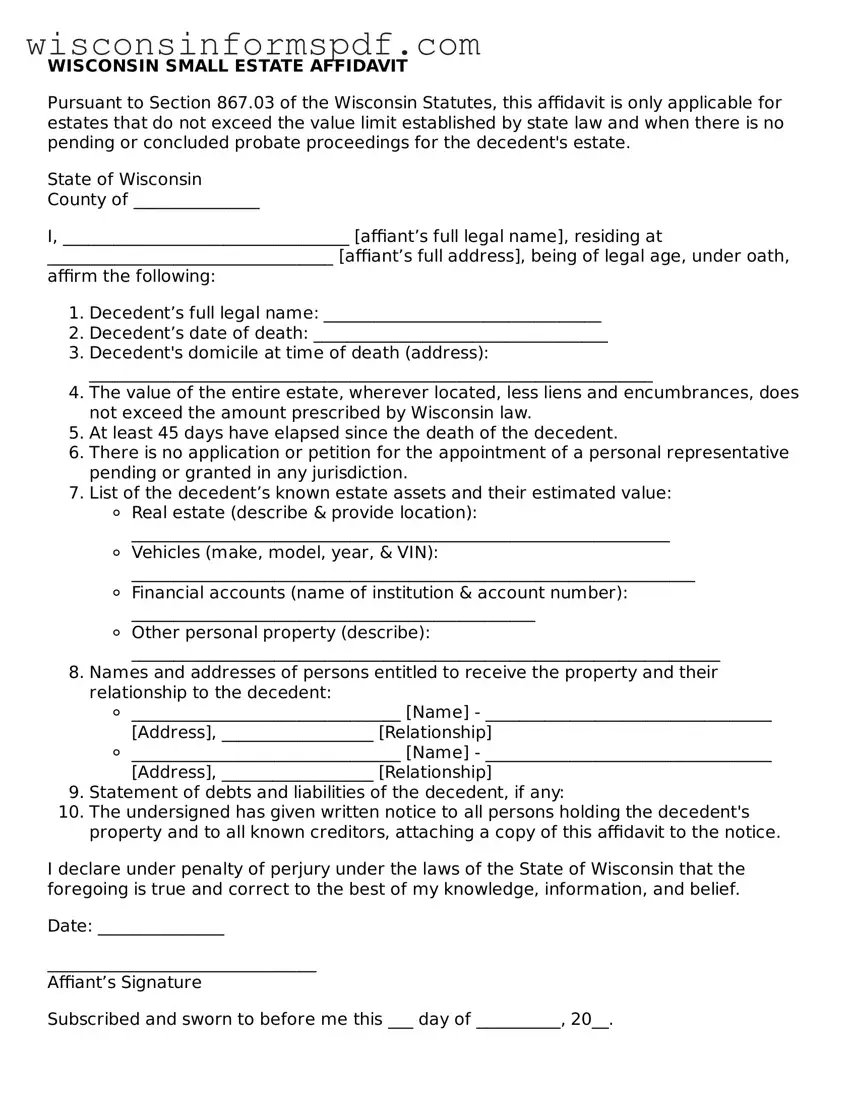WISCONSIN SMALL ESTATE AFFIDAVIT
Pursuant to Section 867.03 of the Wisconsin Statutes, this affidavit is only applicable for estates that do not exceed the value limit established by state law and when there is no pending or concluded probate proceedings for the decedent's estate.
State of Wisconsin
County of _______________
I, __________________________________ [affiant’s full legal name], residing at __________________________________ [affiant’s full address], being of legal age, under oath, affirm the following:
- Decedent’s full legal name: _________________________________
- Decedent’s date of death: ___________________________________
- Decedent's domicile at time of death (address): ___________________________________________________________________
- The value of the entire estate, wherever located, less liens and encumbrances, does not exceed the amount prescribed by Wisconsin law.
- At least 45 days have elapsed since the death of the decedent.
- There is no application or petition for the appointment of a personal representative pending or granted in any jurisdiction.
- List of the decedent’s known estate assets and their estimated value:
- Real estate (describe & provide location): ________________________________________________________________
- Vehicles (make, model, year, & VIN): ___________________________________________________________________
- Financial accounts (name of institution & account number): ________________________________________________
- Other personal property (describe): ______________________________________________________________________
- Names and addresses of persons entitled to receive the property and their relationship to the decedent:
- ________________________________ [Name] - __________________________________ [Address], __________________ [Relationship]
- ________________________________ [Name] - __________________________________ [Address], __________________ [Relationship]
- Statement of debts and liabilities of the decedent, if any:
- The undersigned has given written notice to all persons holding the decedent's property and to all known creditors, attaching a copy of this affidavit to the notice.
I declare under penalty of perjury under the laws of the State of Wisconsin that the foregoing is true and correct to the best of my knowledge, information, and belief.
Date: _______________
________________________________
Affiant’s Signature
Subscribed and sworn to before me this ___ day of __________, 20__.
________________________________
Notary Public
My commission expires: __________
